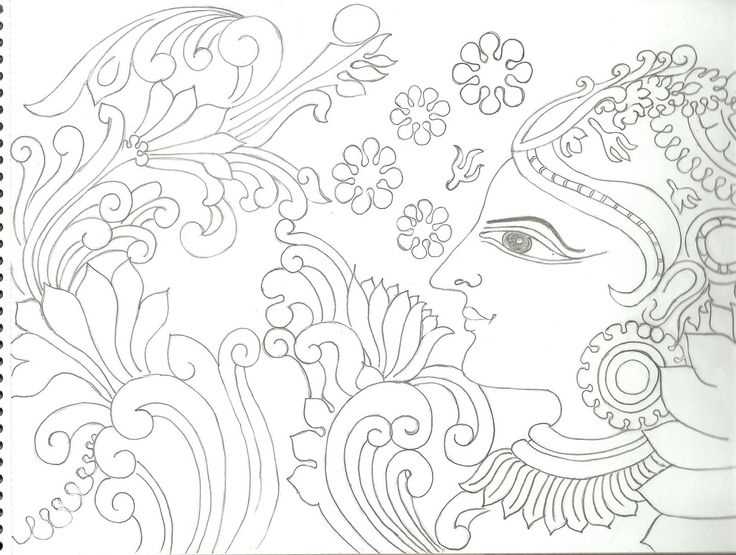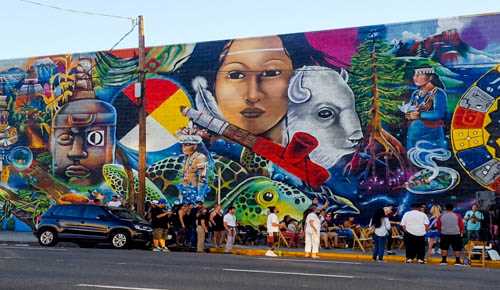
In recent years, street art has emerged as a powerful tool for fostering connection and community engagement. It has the ability to transcend traditional boundaries, bringing together artists from diverse backgrounds and creating a sense of belonging for both creators and viewers alike. Street art is more than just graffiti; it is a form of creative expression that allows artists to tell their stories and connect with their surroundings.
One of the most inspiring aspects of street art is its ability to create a sense of unity within a community. Artists often collaborate on large-scale projects that bring together their unique styles and visions. These collaborations not only result in visually stunning works of art, but also foster a sense of camaraderie among the artists themselves. They become a family, united by their passion for art and their shared desire to make a positive impact on their community.
Street art also has the power to engage and inspire the wider community. When an artist takes to the streets and transforms a blank wall into a vibrant work of art, they are inviting the public to pause, appreciate, and reflect on the beauty and creativity that surrounds them. Street art gives a voice to those who may not have the opportunity to be heard through more traditional means, and it encourages dialogue and understanding among different social groups.
There is something truly magical about the way street art brings people together. Whether it is through organized street art festivals or spontaneous pop-up installations, street art has the power to transform public spaces into vibrant galleries that are accessible to all. Through its creative expression, street art has the ability to break down barriers and create a sense of unity among artists and the community at large.
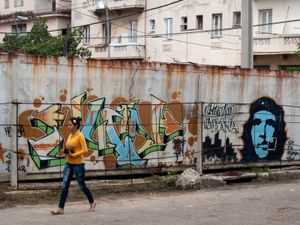
Graffiti has long been a controversial form of artistic expression. While some view it as vandalism, there is a growing appreciation for the unique and vibrant works that can be found on the walls of cities around the world. Street art and graffiti have become an integral part of the urban landscape, showcasing the artistic spirit and creativity of those who create it.
What sets graffiti apart from other forms of art is its raw and unfiltered nature. Artists use spray paint, markers, and stencils to create their masterpieces, often working under the cover of night to avoid detection. This clandestine element adds an air of excitement and rebellion to the art form, while also presenting unique challenges and risks for the artists themselves.
Graffiti is not just about making a mark on a wall; it is about making a statement. Many graffiti artists use their work to address social and political issues, creating provocative and thought-provoking pieces that challenge the status quo. Through their art, they aim to spark conversations, raise awareness, and inspire change.
One of the most fascinating aspects of graffiti is its ability to transform ordinary spaces into works of art. Abandoned buildings, alleyways, and public installations become canvases for artists to express themselves and share their vision with the world. These ephemeral creations inject color and life into the urban environment, bridging the gap between art and everyday life.
Despite its underground nature, graffiti has gained recognition and respect in the art world. Major galleries and museums now exhibit graffiti alongside more traditional art forms, recognizing its cultural significance and artistic merit. This recognition has helped to elevate street art and graffiti beyond its rebellious origins, allowing it to be appreciated as a legitimate art form.
The artistic spirit of graffiti extends beyond the physical artwork itself. It is about the community that forms around it, the conversations it sparks, and the connections it creates. Graffiti brings people together, uniting artists and the community in a shared appreciation for creative expression.
Famous Graffiti Artists
| Name | Country | Style |
|---|---|---|
| Banksy | United Kingdom | Stencils, Satire |
| Jean-Michel Basquiat | United States | Neo-Expressionism |
| Blu | Italy | Muralism, Animations |
As graffiti continues to evolve and push boundaries, it remains a powerful form of artistic expression. It challenges preconceived notions of art, blurring the line between street art and traditional art forms. By celebrating the artistic spirit of graffiti, we embrace the creativity, innovation, and passion that drives this vibrant and ever-changing art form.
The Street Art Community: A Supportive and Inspiring Network
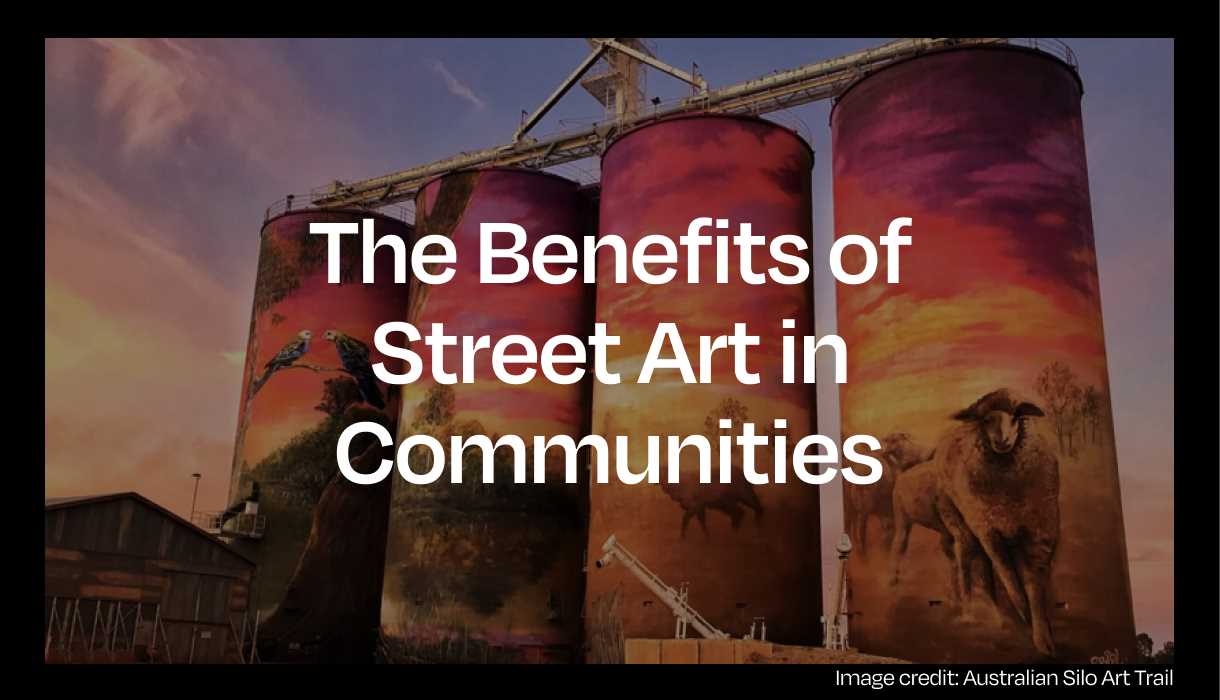
The street art community is a vibrant and diverse network of artists, enthusiasts, and supporters who come together to celebrate and promote the power of creative expression. These individuals are united by their love for street art and their desire to create a positive impact on their communities.
One of the most remarkable aspects of the street art community is its inclusivity. It is a space where artists from various backgrounds, styles, and perspectives can come together, share their work, and inspire each other. Whether they are graffiti artists, stencil artists, muralists, or any other form of street artist, they all find a sense of belonging and acceptance within this community.
The street art community is also known for its supportive nature. Artists often collaborate with each other, sharing their skills and knowledge to create stunning collaborative pieces. They mentor and guide emerging artists, helping them develop their craft and find their voice. This support extends beyond the artistic realm; artists also support each other in personal and professional matters, creating a strong sense of camaraderie and friendship.
Moreover, the street art community is an inspiring network that encourages creative thinking and pushes the boundaries of artistic expression. Artists constantly challenge themselves to create new and innovative works, experimenting with different techniques, materials, and styles. Their art often tackles important social and political issues, sparking conversations and provoking thought in the viewers.
Through their artwork and community initiatives, street artists aim to engage the broader community and foster a sense of unity. They transform once neglected spaces into vibrant and visually appealing areas, breathing new life into their neighborhoods. By involving local residents in murals and street art projects, they create a platform for dialogue and understanding, breaking down barriers and promoting social change.
Creativity Unleashed: Exploring the Boundaries of Street Art

Street art is a form of artistic expression that has long been associated with rebellion and counter-culture. It is a medium that allows artists to push the boundaries of what is considered art, and to challenge social norms and expectations through their creative work.
Street artists use a variety of techniques and materials to leave their mark on public spaces. From elaborate murals to stencils and graffiti, these artists are constantly innovating and finding new ways to express themselves. Each piece tells a unique story and captures the imagination of passersby, bringing color and life to otherwise mundane urban landscapes.
Breaking free from constraints
Street art provides a platform for artists to break free from the constraints of traditional art forms. Unlike artwork displayed in galleries or museums, street art is accessible to all and can be appreciated by anyone who happens to come across it. This democratization of art allows for a wide range of voices and perspectives to be heard, ensuring that art is not limited to a select few.
Furthermore, street art often challenges the notion of ownership and permission. By using public spaces as their canvas, artists are able to reclaim the urban environment and make a statement about the commodification of art. This subversive act forces us to question the boundaries of what is considered legal and acceptable in the art world.
Inspiring dialogue and community engagement
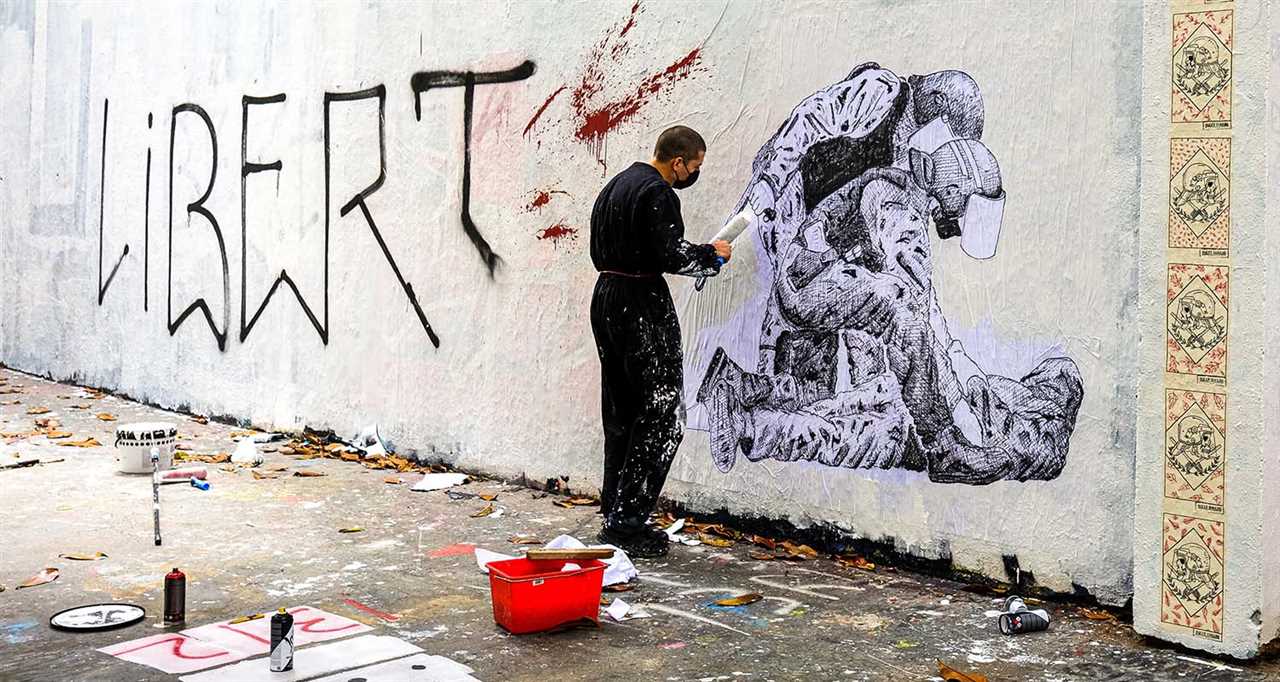
Street art has the power to create dialogue and bring communities together. By sparking conversations and provoking thought, these artworks have the ability to create social change and inspire action. They serve as a reminder that art is not just a decorative element, but a powerful tool for communication and reflection.
Moreover, street art encourages community engagement by involving the public in the creative process. Many street art festivals and events invite local residents to participate in the creation of large-scale murals, fostering a sense of ownership and pride in the artwork and the community it represents.
Street Art as a Symbolic Expression of Family and Unity
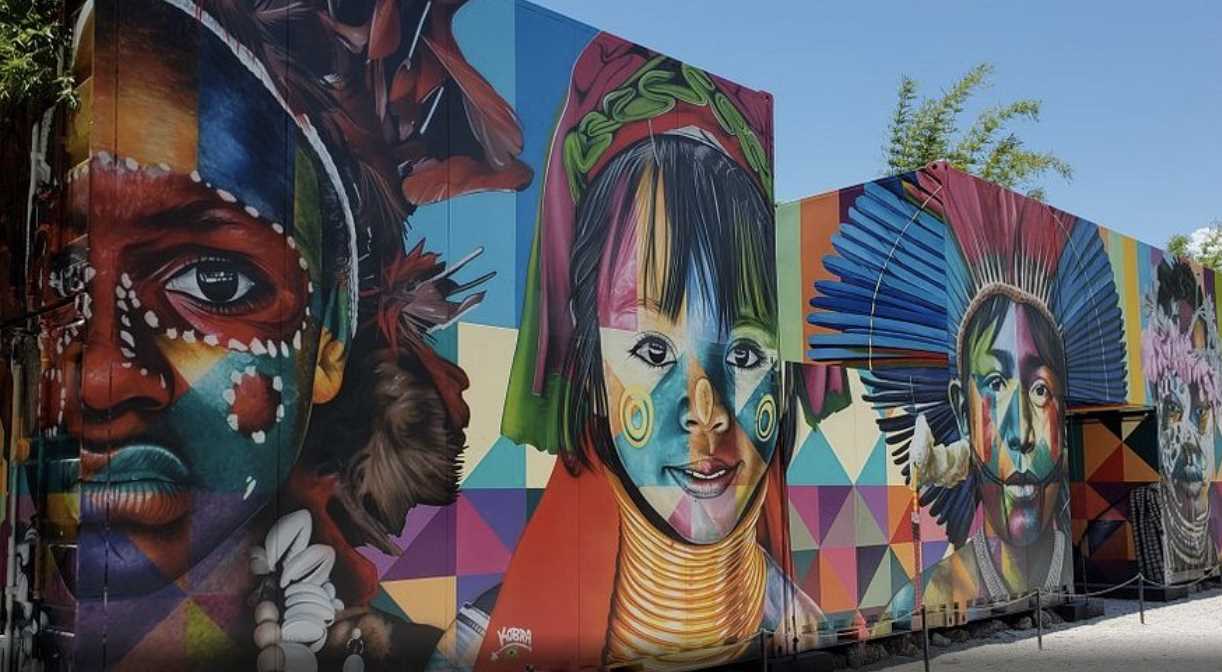
Street art has long been recognized as a powerful form of creative expression that allows artists to communicate their ideas, beliefs, and emotions to a wide audience. The unique and often controversial nature of street art has made it a prominent feature of urban landscapes around the world.
One of the interesting aspects of street art is its ability to bring together artists and the community in a collaborative and inclusive way. In many cases, street art projects involve artists working together to create large-scale murals or installations that not only beautify the space but also serve as a symbol of unity and togetherness.
Artists as a Family
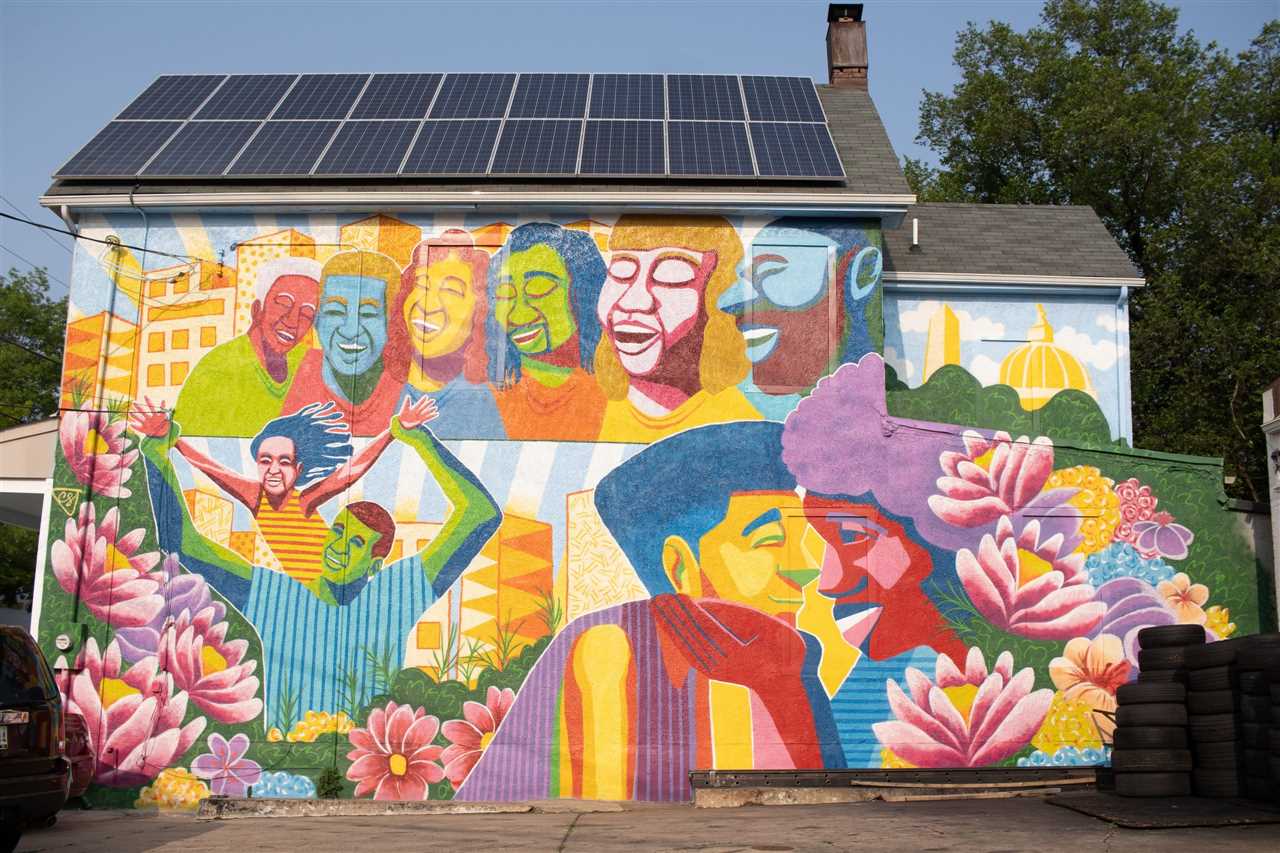
In the world of street art, artists often form tight-knit communities that function as a kind of extended family. They support and inspire each other, share ideas and techniques, and provide a sense of belonging and camaraderie. This sense of family is not limited to a specific location or nationality; it transcends boundaries and brings together artists from all walks of life.
Street art festivals and events further strengthen this sense of family by providing artists with a platform to connect, collaborate, and share their work with the wider community. These gatherings not only foster creativity but also build bonds and relationships that can last a lifetime.
Uniting the Community
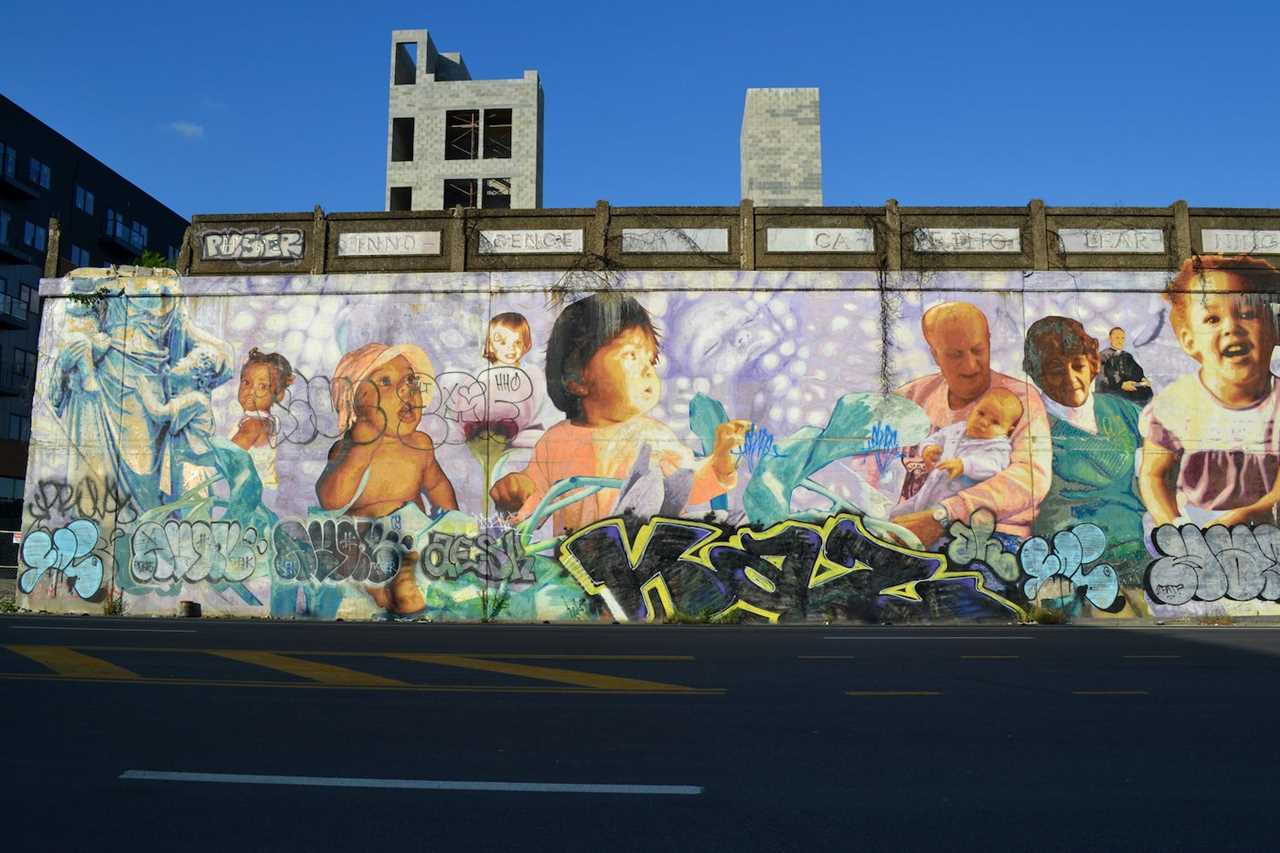
Street art has the power to unite communities by creating a sense of ownership and pride in public spaces. When street art is created in collaboration with local residents or reflects the unique character and history of a place, it allows people to feel a connection to their surroundings and each other.
Additionally, street art often addresses important social issues and challenges the status quo. It can be a form of protest, empowerment, or cultural expression that resonates with the community. By sparking conversations and raising awareness, it encourages dialogue and engagement, ultimately fostering a sense of unity among community members.
Furthermore, street art has the ability to transform neglected or rundown areas into vibrant and inviting spaces. When artists come together to create murals, graffiti, or other forms of street art, it not only revitalizes the physical environment but also attracts visitors and investment, leading to further community growth and development.
Exploring the Diverse Styles and Techniques of Street Art
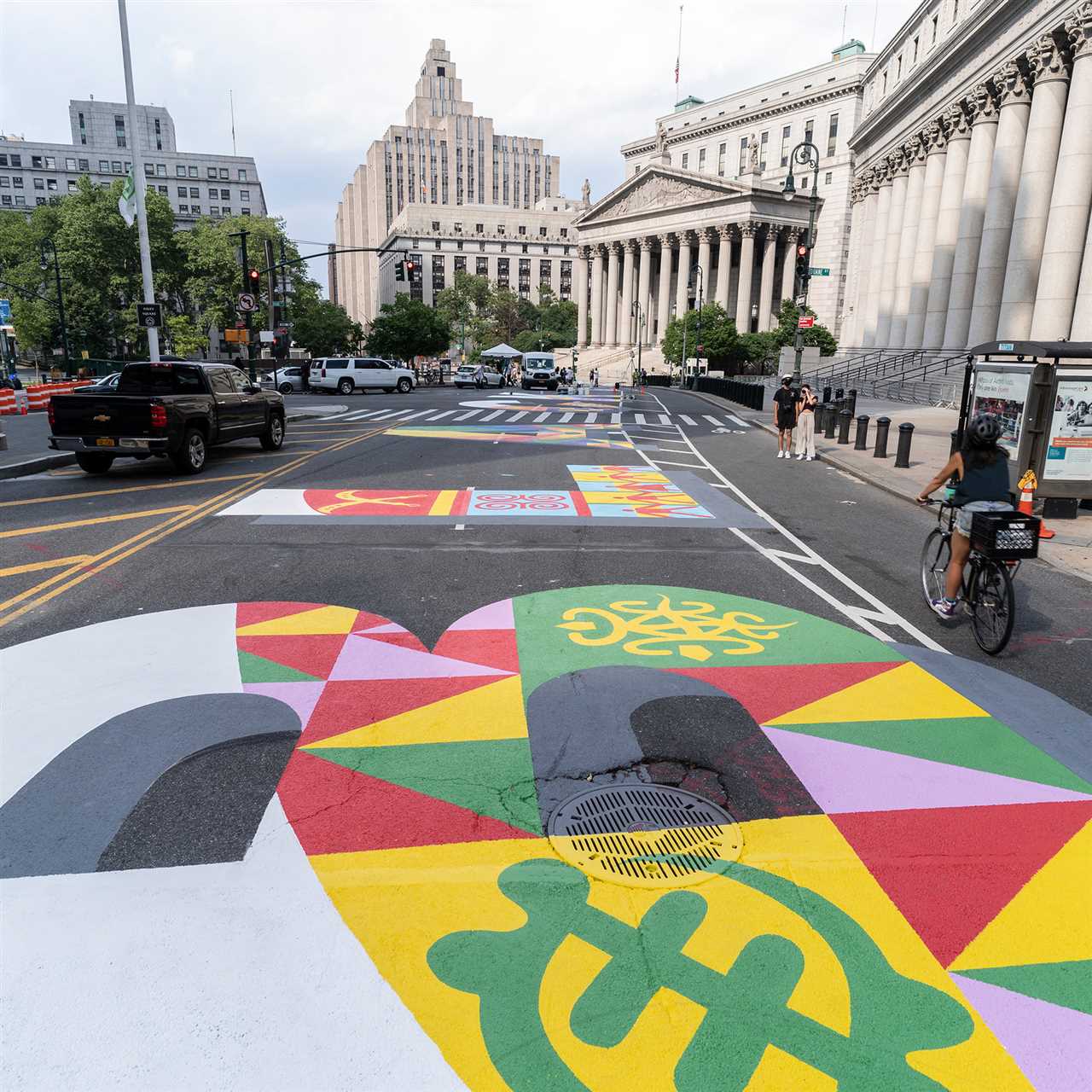
Street art is a vibrant and dynamic form of artistic expression that takes many different forms and encompasses a wide variety of styles and techniques. From colorful murals to intricate stencil work, street art captures the energy and creativity of the artists who create it.
One popular style of street art is graffiti, which is characterized by its bold, stylized lettering and vibrant colors. Graffiti artists use spray paint and markers to create their intricate designs, often incorporating social or political messages into their work. Graffiti can be found on walls, buildings, and even trains, making it a highly visible and impactful form of street art.
Another style of street art is stencil art, which involves creating a design by cutting out a stencil and then applying paint or ink to create the image. Stencil artists often create detailed and realistic images that can be quickly and easily reproduced on various surfaces. This technique allows artists to create large and intricate pieces, while still maintaining a certain level of anonymity.
One particularly unique form of street art is yarn bombing, which involves covering public spaces with colorful knitted or crocheted yarn. Yarn bombing adds a touch of warmth and whimsy to urban environments, transforming everyday objects into vibrant works of art. Yarn bombers often collaborate with other artists and community members, turning the act of creating street art into a communal and interactive experience.
Street art is also known for its use of wheatpasting, a technique that involves applying a mixture of wheat flour and water to affix posters or images to walls and other surfaces. Wheatpasting allows artists to quickly and easily display their work in public spaces, often creating powerful and thought-provoking visual statements.
Whatever the style or technique, street art is a powerful form of creative expression that has the ability to transcend boundaries and unite communities. By exploring the diverse styles and techniques of street art, we can gain a deeper appreciation for the artists who create it and the impact it has on the communities in which it exists.

I am a mural enthusiast and a fervent admirer of street art. Rather than creating murals myself, I am passionate about collecting them. My love for street art knows no bounds. I am dedicated to curating and cherishing these artworks that grace the streets. My collection stands as a testament to my profound appreciation for this form of artistic expression.
read about me



